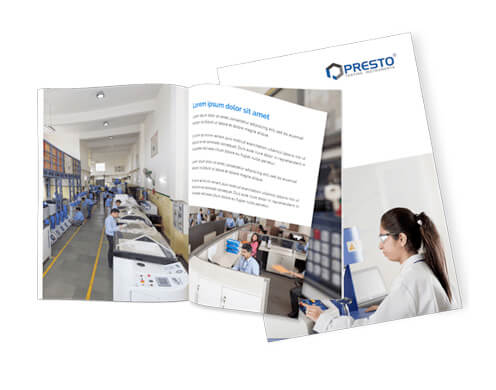Tear Resistance Test on Fabrics

The tear resistance test on fabrics or tear strength is measured to check how the material can withstand the effects of tearing or cuts when in tension. The tear strength is measured as per the ASTM D412 standard test method, which is also used to measure tensile and elongation. The standard test method measures the resistance to the formation and expansion of a tear. The sample is held between two holders and a uniform pulling force is applied until deformation occurs. Force applied is divided by the thickness of the material to calculate the tear resistance.
If the materials have low tear resistance, it can tend to have poor resistance to abrasion. Any damage to such materials could cause quick failures. The tear strength is the tensile force required to rupture a plastic, paper or fabric.
Let us explain more about how to calculate the tear factor.
Presto’s Tearing Strength Tester determines the average force in grams per sample needed to propagate the tearing through a definite length of textile or other materials. There are two samples; one is the rectangular type, and one is with a constant radius testing length. The pendulum is provided with the tester to apply the force. The test is used to measure the loss of the potential energy of the standard 1600 gf instrument using 0-100 scale.
The average tearing force gf is equal to 16 x average scale reading/number of piles
The tear factor is used for comparing the two papers with regards to their tearing strength, which is equal to tear resistance in gf/substance in gm/m.
Why is it important to conduct tear resistance test on fabrics?
The tear strength is the resistance of fabric against tearing. The tear strength is vital for the textiles, bulletproof jackets, worker jeans, tents, apparel, sacks, and industrial applications. If the tear strength is high, means punctures in the fabrics do not propagate easily. The tear strength is vital in the industrial textiles as heavy duty work is performed.
Factors affecting the tear strength are as follows:
• The GSM of the fabric indicates the tear strength. High the GSM means more the tearing strength.
• The strength of the yarn has a direct relation to the tearing strength of the fabric. More the yarn strength means more tear strength.
• Weave designs mean the plain weave could have lowest tear strength. Similarly, the spun yarn has low tear strength as compared to filament yarn.
• The knitted fabric is less strong as compared to woven fabric.
The tearing strength tester is an appropriate tool to measure the tear resistance of various materials including textiles and fabrics.
To get more assistance regarding this testing instrument, you can give us a call at +91 9210903903 or email us at info@prestogroup.com. We will surely assist you with your queries.
Recent News
- Paper & Packaging Testing Instruments
- Paint, Plating & Coating Testing Instruments
- Plastic & Polymer Testing Instruments
- Environmental Testing Chambers
- PET & Preform Testing Instruments
- Color Measuring Testing Instruments
- View Entire Range Instruments

Catalogue 2023
Get information about new product launches, research, innovation and endeavors at Presto.
download Free CopyNeed more information
Connect with us for your business enquiries. Generally we respond within one or two working days.
send enquiriesContact Us
Quick quote
